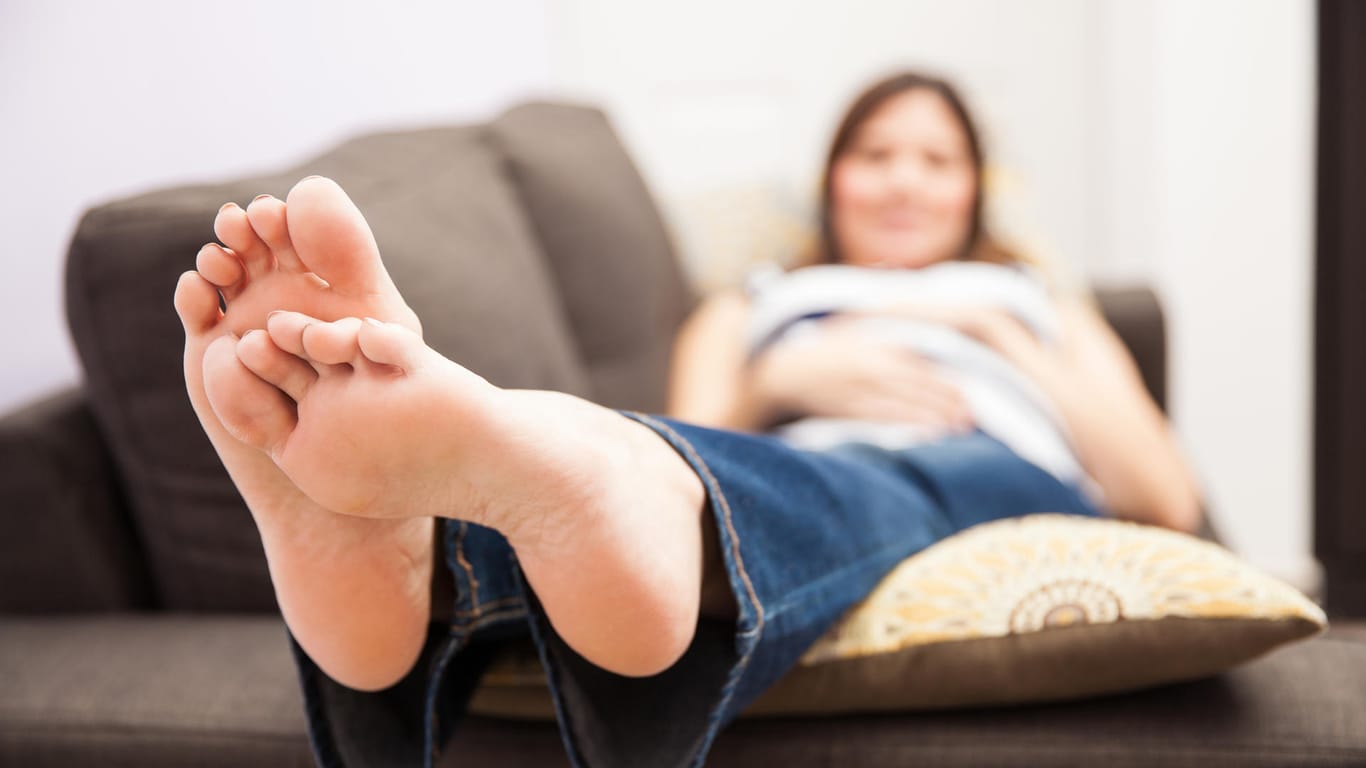 Many pregnant women complain that their feet swell during pregnancy.
Many pregnant women complain that their feet swell during pregnancy.
The claim that women during and after pregnancy
“Blown up like balloons”, “unsightly square-toed shoes” or “giant kicks that only fit into flip-flops” – this is how many expectant mothers describe their feet as they continually increase in size over the course of nine months, just like their stomach .
Most pregnant women get larger feet
A doctoral thesis from the University of Münster by Johannes Christian Hentschel from 2016 also dealt with the volumes of female feet during pregnancy . The feet of 40 women were regularly measured. The result: foot length, width and volume increased very often. On average, the foot became 1.8 millimeters longer and two millimeters wider. And above all, he became fatter.
The main cause is water retention
This phenomenon occurs in around 70 percent of women, especially in the second half of pregnancy, because the female body now stores more water in the tissue. One reason for this – according to the clinical study – is the enlarged uterus, which now puts increased pressure on the lymphatic vessels and veins in the pelvis. This causes the blood from the feet to flow more slowly back to the heart and a backlog occurs.
The fact that the vascular system now has to handle up to twenty percent more blood also plays a role. The result of this: The pressure increases and the stressed vessel walls are no longer able to cope with the forces acting on them. As a result, fluid from the blood seeps into the tissue and is stored there. Due to gravity, this is particularly noticeable in the feet – they swell.
Progesterone reduces elasticity
Tissue weakness is also promoted by progesterone: This hormone, which is increasingly produced by the placenta, primarily ensures that the elasticity of the growing uterus is increased. The unpleasant side effect is that the tension of other tissue structures also loosens.
Another factor that promotes swelling in the feet is the changed protein balance. As the due date approaches, a woman absorbs more and more protein and in return excretes less and less of it. This in turn leads to water leaking out of the vessels. According to the expert explanation, the child’s cell proteins would then be built from the increased “protein reserve” in the mother’s organism.
Flat feet even after birth
Fortunately, for most women, thick feet are a thing of the past pretty quickly after giving birth . The body gradually flushes out the fluid retention, so that after just a few weeks the feet appear normal again and have returned to their original dimensions.
However, for some new moms, plus size changes below the ankles are permanent. Miriam reports: “Before I had my two children, I still fit into shoe size 39, today I need size 41 – and I’m afraid that won’t change much – probably because I still have a few extra pounds on my ribs carry around with me.”
And Sonja complains: “After the birth of my son, I unfortunately had to sort out half of my chic and elegant shoes. Somehow I felt like Cinderella when I tried them on. It was jamming and pinching everywhere. Everything was squeezed in, especially in the width.”
The arch of the foot is gradually pushed through
Such postnatal anatomical reshaping of the walking system was examined in more detail in a study at the US University of Iowa. Here, researchers found that some women’s feet grew by up to two shoe sizes after giving birth. Even months later, some of the study participants’ feet were significantly longer and wider than at the beginning of the pregnancy, even though the typical water retention had already been reduced.
The experts also attribute the fact that such lasting enlargements can occur to the increased strain on the bones and their ligaments. During pregnancy, the walking frame in particular has to cushion the extra pounds. As a result, the longitudinal and transverse arches of the arch of the foot become more compressed and the strength of the structure decreases.
Slack ligaments caused by pregnancy hormones
According to the findings of the American scientists, the ligaments are primarily responsible for the weakening foot statics. Because these stabilizers in the joints – and there are some of them in the feet – also suffer from the changed hormonal conditions during pregnancy: they demonstrably become weaker and lose strength. Doctors then treat these orthopedic abnormalities as splayfoot.
